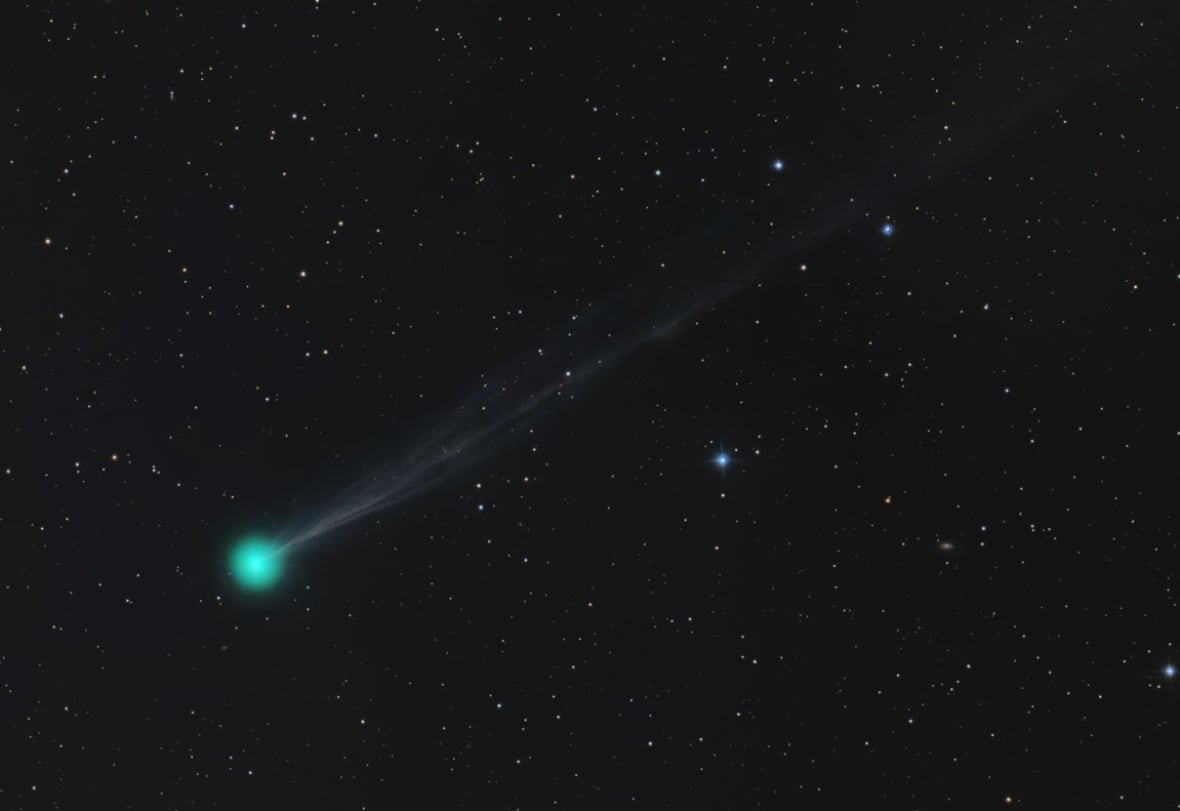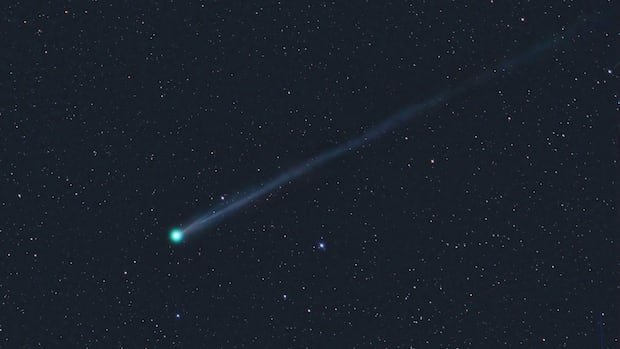One of the great things about astronomy is that it’s full of surprises, especially when it comes to comets — you just can’t predict when a new one might pop up. But when one does appear, it gets both amateur and professional astronomers very excited.
And that’s why there’s a lot of buzz around a recently discovered comet that is now visible through binoculars, if you know where to look.
The comet was just given an official designation of C/2025 F2 (SWAN), which is provided by the International Astronomical Union’s Minor Planet Center (MPC). Until yesterday, it went by the name SWAN25F. It’s named in part after the SWAN (Solar Wind Anisotropies) camera on board NASA and the European Space Agency’s Solar and Heliospheric Observatory (SOHO) spacecraft. It should get an official name soon.
The comet was co-discovered by Australian amateur astronomer Michael Mattiazzo, who used SWAN images available to the public. He previously used the same method to discover a comet in 2020.
Right now, the comet can be found in the early morning sky low in the eastern horizon, in the constellation Pegasus. But over the next few weeks, as the comet moves through our solar system, it will rise a little higher in the morning sky.
The comet is so new that the MPC is collecting additional observations to get more information from it, such as its origin. However, Paul Wiegert, a professor at Western University’s department of physics and astronomy in London, Ont., said that at the moment, its believed to come from the furthest reaches of our solar system, called the Oort cloud, where hundreds of millions — or even trillions — of icy objects reside.
The Oort cloud is mind-blowingly far away. The distance from the sun to Earth is roughly 150 million kilometres, and that measurement is called one astronomical unit (AU). The distance from the sun to the Oort cloud is estimated to be anywhere from 2,000 to 5,000 AU.
When and how to see it
If you’d like to see this ancient relic left over from the formation of our solar system, you need a few things.
First, you need to get up early. The comet is currently low on the eastern horizon and visible before sunrise. You can download astronomy apps on your phone that will allow you to search for particular constellations — in this case, Pegasus.
Second, you need a pair of binoculars. At the moment, the comet isn’t visible to the naked eye. It’s currently at magnitude 8. Visually, the naked eye can only see magnitude 6 in dark-sky locations (in astronomy, brightness is on a scale where lower and negative numbers signify brighter objects).

Third, you need a bit of luck.
It had been believed that C/2025 F2 (SWAN) reached its closest point to the sun, called perihelion, some time in February. However, now that more information has been collected, the MPC is reporting that perihelion will be reached on May 1. This means that the comet should continue to brighten. But whether or not that brightness will continue is unknown. Astronomers are hoping it will become visible to the naked eye by the end of the month.
“We expect it to get brighter, not because it’s necessarily getting more solar heating and being more active and producing more of the gasses that we see, but our geometry relative to it, we’re going to get closer to it,” Wiegert said.
“And all of those details are going to work in its favour. So we’re hoping that it’s going to get quite a bit brighter over the next month or so.”
And that luck also extends to having clear skies.
If the comet does continue to remain intact and not break apart as some do — though it’s passed the most dangerous time for this to happen, when its closest to the sun — it should continue to both brighten in the sky and rise higher in the next three weeks.

But be warned: the comet won’t look like the photos you see online, or even in this story. Those images are made by shooting multiple photographs through telescopes and combining them together. Instead, what you’ll see through your binoculars will be a faint fuzzy patch of light. And while that may not seem very exciting, just think about how far that object has travelled.
“A new comet is always exciting. They appear unexpectedly. They’re quite beautiful. They do tell us a lot, too, about our solar system, and about how the planets formed,” Wiegert said. “So, you know, it’s a sort of a beautiful addition to our springtime skies.”

